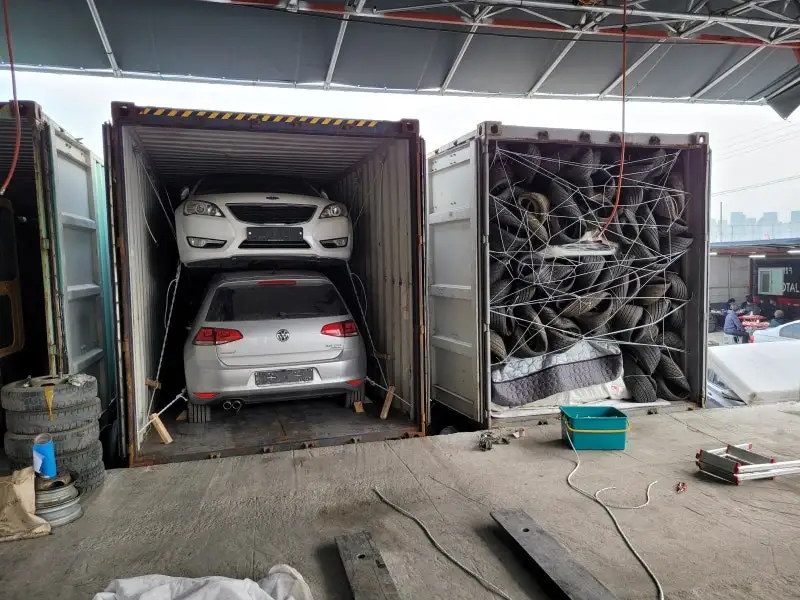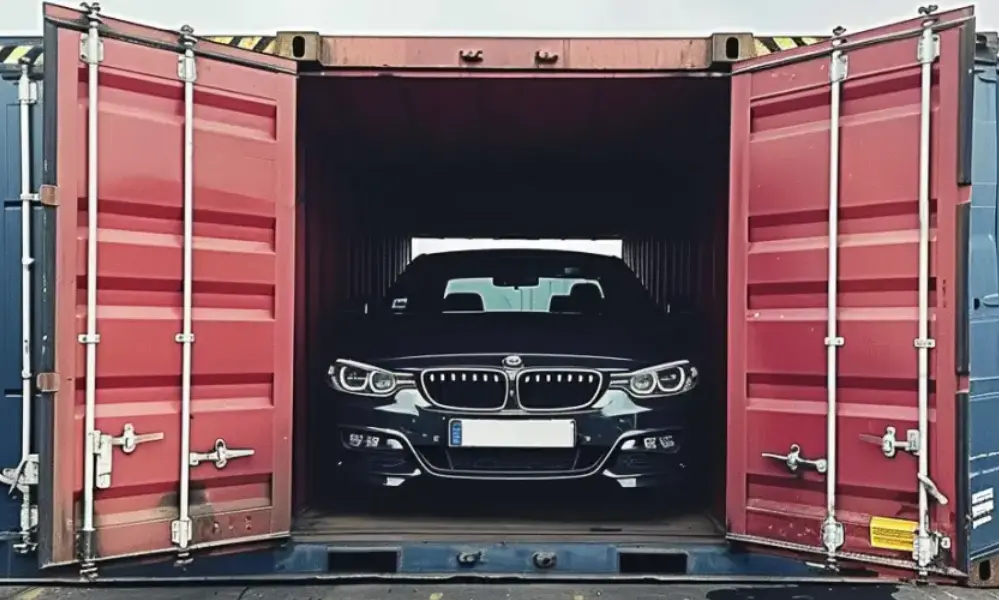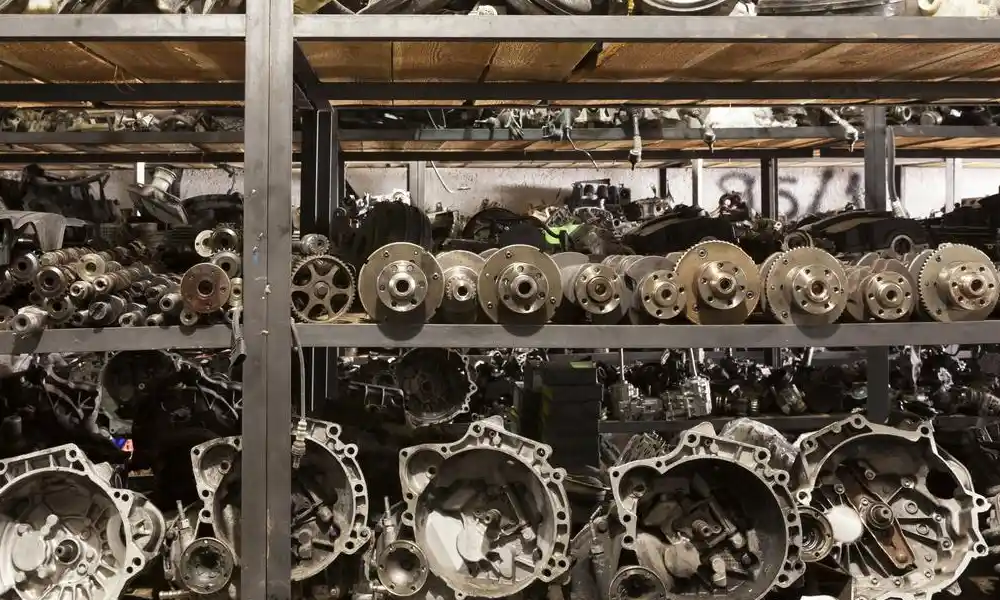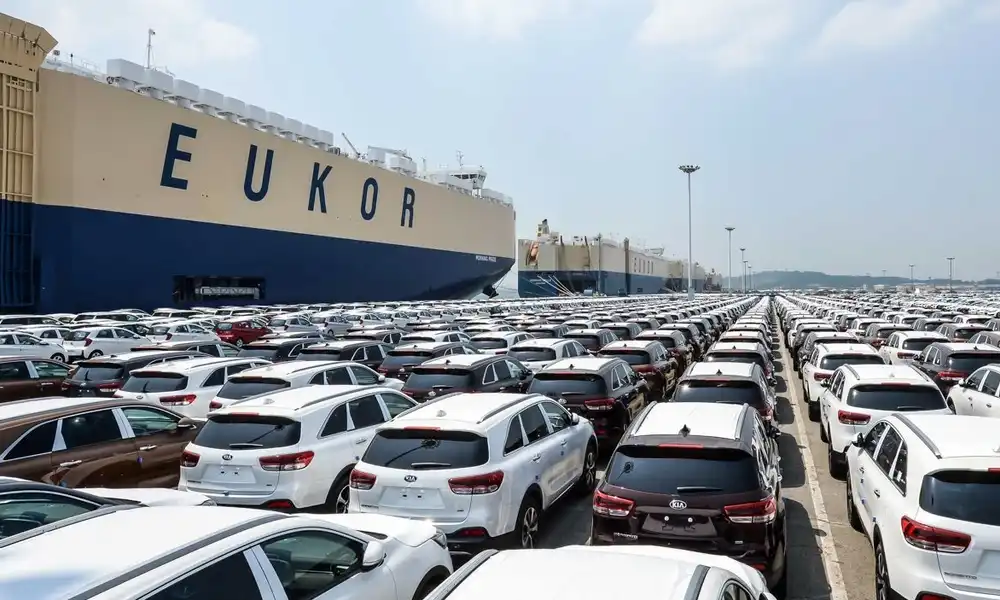Container shoring for Korean used cars involves securing vehicles with shoring (blocking) and lashing (straps) inside shipping containers. A 20ft container typically holds 1 car, a 40ft fits 2 cars, and a 40HC allows 3–4 cars with racks, ensuring safe international transport.
UsedCarKorea.com
Shipping Korean used cars internationally requires precise container shoring for maximum safety and efficiency. Container shoring for Korean used cars ensures vehicles are properly blocked and lashed, preventing movement during transit. This guide explains the process and reveals how many cars fit in 20ft, 40ft, and 40HC containers.
Table of Contents

What Is Container Shoring (vs. Lashing)?
- Shoring: physical blocking/bracing (wheel chocks, wooden/steel blocks) to prevent rolling, sliding, or tipping.
- Lashing: ratchet straps/chains attached to container lashing rings to restrain the vehicle in all directions.
Done right, the car can’t move even under ship motion—protecting suspensions, bodywork, and your claim if something goes wrong.
Primary benefits: cargo safety, carrier compliance, damage prevention, and better packing density when combined with engineered racks.
Container Sizes & How Many Cars Fit
| Container | Internal size (approx.) | Typical w/o racks | With professional racks* |
|---|---|---|---|
| 20ft (STD) | 5.9 m L × 2.35 m W × 2.39 m H | 1 sedan/SUV | 2 micro/kei cars (route & carrier dependent) |
| 40ft (STD) | 12.03 m L × 2.35 m W × 2.39 m H | 2 sedans/SUVs | 3 small cars, or 2 sedans + 1 compact |
| 40ft High Cube (HC) | 12.03 m L × 2.35 m W × 2.69 m H | 2 sedans/SUVs | 3 sedans common; 4 small; up to 5 kei with bespoke multi-deck |
* “Professional racks” = engineered double-deck systems (steel/ISPM-15 wood), certified lashings, and carrier approval.
Quick size references (typical KR cars):
- Kei/경차 (e.g., Kia Ray, Morning): L ≈ 3.4–3.6 m
- Compact/Midsize sedan (Avante/Elantra, K5): L ≈ 4.5–4.9 m
- SUV (Tucson, Sorento): L ≈ 4.6–5.0+ m, H ≈ 1.65–1.75 m
Rule of thumb:
• 20ft = 1 car (2 kei with certified rack only).
• 40ft = 2 cars w/o racks; 3 small with racks.
• 40HC = 3 sedans with racks; 4 small or 5 kei with bespoke multi-deck and strict compliance.
Step-by-Step Export Process in Korea
- Vehicle prep: basic mechanical check, remove loose items, exterior clean for photos.
- Safety: fuel ≤ ¼ tank (often ≤ 1/8), battery disconnected or isolator off.
- Documents (KR/EN):
- 자동차 수출 말소(또는 말소) 증명서 (Deregistration/Export Deregistration Certificate)
- 자동차 등록증(수출용) / 판매계약서 / 인보이스 & 패킹리스트 (Export Certificate)
- 수출신고 (UNI-PASS) & 보험증권 (해상적하)
- 선하증권(B/L) after booking
- Book & stuff: reserve CFS slot near Busan / Incheon / Pyeongtaek-Dangjin; plan racks if needed.
- SOLAS VGM: submit Verified Gross Mass to the carrier.
- Gate-in: seal the container (record seal no.), deliver to port, receive B/L.
Professional Shoring & Lashing: Exact Sequence
- Pre-survey: VIN, odometer, panels; take photos from all sides.
- Floor prep: sweep dry; lay friction mats on tire paths.
- Positioning: drive in slowly; center the vehicle; target ≥ 10–20 cm clearance on ends/sides.
- Wheel chocks: fix to sacrificial dunnage (never into container floor steel).
- Lashing setup (per car):
- 8–10 ratchet straps total (2 per wheel + optional chassis straps).
- Strap angle 30–60° to deck; cross-lash for lateral restraint.
- Attach only to container lashing rings; verify WLL (working load limit) on ring & strap.
- Racks (if multi-level):
- Build with ISPM-15 timber or engineered steel.
- Use rubber pads at contact points; load top car inch-by-inch; lash top car to rack and rack to container.
- Final checks: nothing touches doors/walls/roof; battery off; no leaks; photo every lashing; close & seal.
Capacity Planning Examples
20ft (STD)
- Without racks: 1 sedan/SUV.
- With racks: 2 kei possible only with certified systems and carrier approval.
40ft (STD)
- Without racks: 2 sedans (nose-to-tail).
- With racks: 3 small cars or 2 sedans + 1 compact (height becomes limiting factor).
40ft High Cube (HC)
- Without racks: 2 sedans/SUVs (headroom unused).
- With racks: common to load 3 sedans (2 bottom + 1 top). With small hatchbacks, 4 is feasible; with bespoke multi-deck, up to 5 kei in some lanes.
Why the 3rd car needs a rack in 40ft/40HC:
Floor length ≈ 12.03 m. Two midsize sedans at ~4.7 m each = 9.4 m used, leaving ~2.6 m—not enough for a third car on the floor. Extra height in 40HC enables a top deck for car #3.
Materials, Tools & Specs (What Pros Use)
- Ratchet straps: 8–10 per car; WLL ≥ 1,000 kg (or equivalent daN).
- Wheel chocks: hardwood/engineered; mount to dunnage.
- Friction mats: under tires; boosts static friction.
- ISPM-15 timber: required for export wood.
- Edge protectors: prevent strap abrasion at sharp edges.
- Tools: torque/impact driver, drill, tape/markers, ramp plates, level, headlamp, PPE.
- Docs kit: VIN list, photo log, load plan diagram, seal log, VGM sheet.
Compliance You Must Meet
- CTU Code (IMO/ILO/UNECE): load distribution; securing against longitudinal, lateral, and vertical forces.
- ISPM-15: heat-treated wood (stamped) for any export timber used in shoring/racks.
- SOLAS VGM: Verified Gross Mass submitted accurately and on time.
Carrier rules can be stricter—always follow the stricter requirement between law and carrier policy.
Container vs Ro-Ro (Quick Decision Guide)
Container pros: protected from elements/theft, door-to-door, include parts/spares, consolidate multiple cars.
Ro-Ro pros: simpler handling, often cheaper per single unit, frequent sailings on some trades.
Choose container when: sending multiple cars together, adding spares, or lanes with limited Ro-Ro options.
Watch for: rack fabrication & stuffing labor, used-vehicle surcharges, carrier limitations on fuel/battery/racks.
Common Mistakes (and How to Avoid Them)
- Too few straps → Use 8–10 per car and cross-lash.
- Nailing into container floor steel → Always into sacrificial wood, never the steel substrate.
- Ignoring height on 40STD → Plan 40HC for 3+ cars.
- Skipping friction mats → Cheap, big safety gain.
- Zero photo evidence → Photograph every step (open/closed doors, seal number).
Final Takeaway
If you plan 2 cars or fewer, a 40ft works without racks. For 3+, choose a 40HC and a professional racking provider. Always prioritize CTU Code safety over squeezing in “one more” car.
Want this tailored to your actual car list (model & dimensions)? Share them and I’ll generate a precise loading plan with clearances, lashing points, and a printable checklist.

FAQs
How many Korean used cars fit in a 20ft container?
Standard practice: 1. 2 kei only with certified racks and carrier approval.
How many fit in a 40ft container?
Typically 2 sedans without racks; 3 small with racks (height-dependent).
How many fit in a 40HC?
Commonly 3 sedans with a two-tier rack; 4 small hatchbacks; up to 5 kei with bespoke multi-deck racks (subject to carrier rules).
Do I need to drain fuel?
No. Keep ≤ ¼ tank (often ≤ 1/8). Disconnect battery and follow carrier policy.
Which Korean ports are best?
Busan, Incheon, Pyeongtaek-Dangjin—choose based on origin, sailing schedule, and destination.


